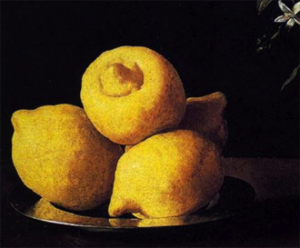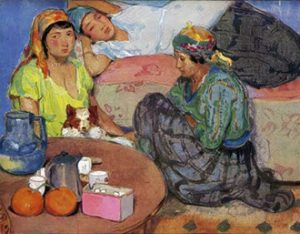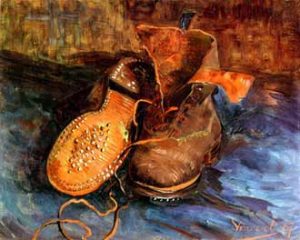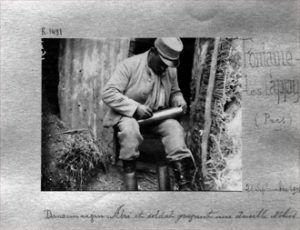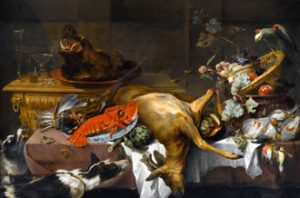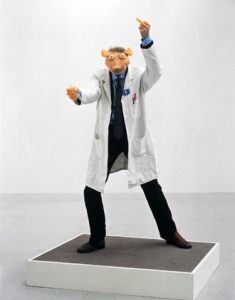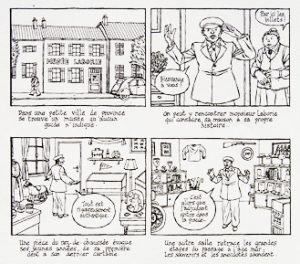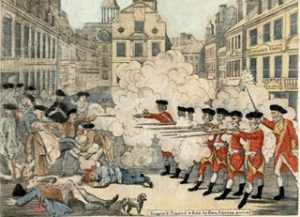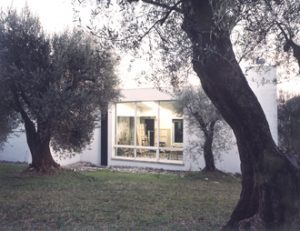In studying the status of things over the long term, Amaru Lozano-Ocampo lay stress on the transition from the mysticism of the classical age to the secular world of modernity. According to him, the still lifes of the seventeenth century would be the ultimate testimony to a religious sensibility inherited from the Middle Ages. ...
Arts & Sociétés
Letter of Seminar
Non classé
-
# 85 | How did Archives Become Social Objects? | Philippe Artières
Philippe Artières devotes his work in large part to the contemporary history of writing—to our graphic culture, from neon signs to tattooing. He is never far removed from fiction authors and artists, which also must contribute to making his work inventive. He goes back over for us the process by which archives have become social ...
-
# 82 | Something Else in the Orient | Christian Peltre
Christine Peltre tells us of the status of “things” in the Orient imagined by nineteenth-centuries contemporaries: objects acquired in bazaars and souks, robes, cloaks, babouche slippers, turbans, headgear, carpets, etc. “Operators of belief, border agents, or reminders of proximity?” Everything would be a way of recalling sites and atmospheres, dazzling sights, even vain ...
-
# 81 | The Naked Thing | Hadrien Laroche
“Disappearance” is at the heart of the studies and novels of Hadrien Laroche, who reexamines for us “the thing” in the work of Martin Heidegger, Jacques Derrida, and Meyer Shapiro. We are familiar with the discussion around Van Gogh’s shoes, a still life lively enough to give rise to some very keen, contradictory interpretations. ...
-
# 79 | The Art of Trenches | Bertrand Tillier
As a historian of anthropological art, Bertrand Tillier studies objects of all sorts manufactured in the trenches by the combatants of all nations who were engaged in the bloody conflict of the Great War. Conscious of the reticence of art historians to include such unclassifiable and disturbing products, he directs his attention toward the ...
-
# 78 | Animals and the Paintings of Things | Armelle Fémelat
Armelle Fémelat, whose dissertation on Italian equestrian portraiture from the thirteenth to fifteenth centuries is forthcoming, brings us into the world of representations of animals shown dead or alive, wherein things have lives of their own. She invites us to grasp, through the world of forms, the nature of animal otherness by crossing ...
-
# 77 | Animal as Objects | Marion Duquerroy
Long neglected, animals have once again, especially since the 1980s, been placed at the center of contemporary art. Against all expectations, animals serve less the cause of ecology than to reassure humans of their own status, as we are told by Marion Duquerroy, whose dissertation on this subject will be published by Presses ...
-
# 76 | Objects: Between Art and Social Sciences | Thierry Bonnot
Thierry Bonnot exits from the strictly positivist view the social sciences hold of objects. No, he says — in the wake of other researchers who have refreshed the history of things — objects are not “witnesses” but social facts that have complex relationships with human beings as they interact in our social exchanges. In ...
-
# 75 | Massacres | Anne Lafont
Anne Lafont offers us a foretaste of her key new research on the genre of massacres, which she examines in a perspective that encompasses the history of scientific expeditions, territorial conquests, and eighteenth-century colonization efforts. She blends American, European, and Caribbean images into the same corpus. Lafont admirably shows in what way representations ...
-
# 74 | War of the Spirits | Dorian Astor
Dorian Astor has just published a major book on Friedrich Nietzsche, La détresse au présent (Folio). No one is better qualified than he to reexamine the question of how philosophy and war relate to each other. As Astor recalls in his Introduction, “Nietzsche addresses us as a problem that has not yet been ...
